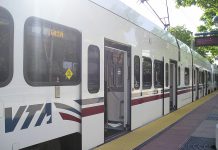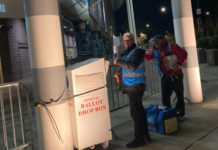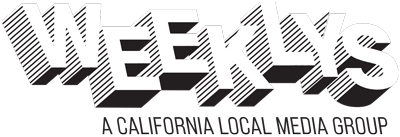*Updated Nov. 4 at 9:35pm
Los Altos Vice Mayor Neysa Fligor roared out to an early lead in the race to become the next County Assessor (and fill the position left vacant by Larry Stone’s retirement) Tuesday night.
In early results she had 39.93% of the vote, followed by former Saratoga Councilmember (and “No on Measure A” campaigner) Rishi Kumar at 24%, then former Saratoga mayor Yan Zhao at 20.80% and then Bryan Do, an East Side Union High School District board member at 15.26%.
“We’re thrilled to have made the December 30th runoff while spending a fraction of what my opponent did,” Kumar said in a release shortly after results were announced. “I stand by my pledge to deliver property tax exemption for those aged 60 and over with a statewide ballot initiative that’s already forging ahead. I will get it done and we are here to win this seat!”
Measure A results
With a significant majority of ballots counted, Santa Clara County voters are supporting a small five-year increase in the County sales tax by nearly 45,000 votes.
The Santa Clara County Registrar of Voters reported 181,839 “Yes” votes and 137,092 “No” votes, with 318,931 ballots counted.
The Registrar of Voters reported that 340,365 ballots had been cast in the month before today’s Special Election Day, representing 31% of registered voters.
The results showed Santa Clara County voters approving of an increase in local sales taxes that County officials say is necessary to help offset dramatic cuts in federal aid by the Trump Administration, mostly in health care.
The approval of the additional 0.625% in County sales taxes would propel half of the County into double-digit territory.
The sales tax increase needs just a simple majority of voters to be enacted, because it is an unrestricted tax that can be spent for any County government purpose.
County officials said the higher taxes are needed to close a projected billion-dollar budget shortfall they say is the result of the “Big Beautiful Bill” approved by a Republican Congress and signed by President Trump.
The county-wide sales tax would increase to 9.75%. The increase will be rolled back in five years, unless extended.
County Executive James Williams said the County can collect more than $330 million over five years from the five-eighths-cent additional sales tax.
Purchases made in the cities of San Jose and Milpitas, which have city sales taxes as well, would have a 10% tax. Campbell businesses would collect 10.5%, the highest rate. Consumers in Los Gatos would pay 9.875%.
The sales tax adds $187.50 to the price of a $30,000 car, and $1.25 to a $200 non-exempt retail purchase.
The Santa Clara County Board of Supervisors approved the tax in a special meeting Aug. 7 after Metro Silicon Valley reported that about 30% of the County’s budget is now compromised by cuts to federal healthcare programs like Medicare and Medicaid—distributed by the state as Medi-Cal.
Williams forecast Thursday that county revenue would suffer a $1.3 billion loss by the 2029-30 fiscal year without a revenue increase at the county level.
About 70% of the County’s public healthcare system, which has expanded rapidly in recent years, is funded by Medicare and Medicaid.
Prop 35, passed by California voters in November to expand Medicaid funding, will no longer take effect as a result of the immediate impacts of HR1. State leaders need to fill in the financial gap for counties like Santa Clara, Williams said.
“HR1 has punched a huge hole in our safety net,” Board President Otto Lee said. “Our county operates four hospitals and dozens of clinics in addition to supporting community clinics.”
Medicare is a federal health insurance program benefiting people older than 65 along with younger people with disabilities, while Medicaid provides benefits to low-income adults and children. Medicaid is the single largest source of federal revenue for the County of Santa Clara, representing about $1.9 billion of its budget.
The County’s public system is the primary care provider for one in four county residents.
Williams said a combination of cuts in services and the sales tax increase are necessary for Santa Clara County to sustain service levels at the 15-hospital and clinic Valley Healthcare System.
The largest portion of the County sales tax rate is a state levy of 7.25%. County governments—and many cities—add additional sales taxes. In the Bay Area, the current sales tax rates vary from a low of 8.625% in San Francisco to a high of 10.25% in Alameda County, where consumers buying products in four cities—Alameda, Albany, Newark and San Leandro—pay a 10.75% sales tax.
Current sales taxes in 65 California cities are at 10% or higher – 47 in Los Angeles County. The proposed new Santa Clara County property tax rate would match the current Los Angeles County rate.
Statewide, the city of Lancaster in Los Angeles County has the highest local sales tax rate, at 11.25%, according to the California Department of Tax and Revenue.
Prop 50
County residents by-and-large had supported the State Proposition 50 redistricting effort—72.13% to 27.87%—in the early results.
Kumar, the “No on Measure A” chairperson, conceded defeat on behalf of their side.
“The PEOPLE have spoken, and I hope the county will spend the money judiciously,” he said.
*Drew Penner contributed to this report










